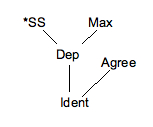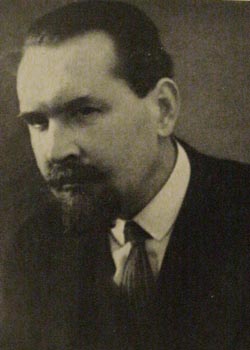|
A Thematic Guide To Optimality Theory
''A Thematic Guide to Optimality Theory'' is a 2001 book by John McCarthy in which the author provides a theoretical introduction to optimality theory. Reception The book was reviewed by David Odden, Chiara Frigeni, Marina Tzakosta and Diana Archangeli Diana B. Archangeli (born in Oregon in 1953) is an American linguist and Professor at the Department of Linguistics at the University of Arizona. She earned her M.A. at the University of Texas-Austin in 1981, and her PhD from MIT in 1984, with .... References External links A Thematic Guide to Optimality Theory 2001 non-fiction books Phonology books Linguistics textbooks Optimality Theory Books on linguistic typology Cambridge University Press books {{ling-book-stub ... [...More Info...] [...Related Items...] OR: [Wikipedia] [Google] [Baidu] |
John McCarthy (linguist)
John Joseph McCarthy (born 1953) is an American linguist and the Provost and Senior Vice Chancellor for Academic Affairs at the University of Massachusetts Amherst since July 2017. In July 2018, he assumed office as the Provost. McCarthy is best-known for his work on Optimality Theory in phonology: with Alan Prince, he devised Correspondence Theory and alignment constraints, although he has subsequently renounced the latter.McCarthy, John. OT Constraints are Categorical. ''Phonology'' 20 75--138. 2003 He has since written textbooks like '' Doing Optimality Theory: Applying Theory to Data''. Earlier in his career, McCarthy was responsible, along with Prince, for extending autosegmental phonology, and later Optimality Theory, to morphology, in particular to solve the problem of nonconcatenative morphology in Semitic languages. Career HHe completed his A.B. in linguistics and Near Eastern languages at Harvard College and obtained his Ph.D. from MIT in 1979. He was a professor at t ... [...More Info...] [...Related Items...] OR: [Wikipedia] [Google] [Baidu] |
Optimality Theory
In linguistics, Optimality Theory (frequently abbreviated OT) is a linguistic model proposing that the observed forms of language arise from the optimal satisfaction of conflicting constraints. OT differs from other approaches to phonological analysis, such as autosegmental phonology and linear phonology (SPE), which typically use rules rather than constraints. OT models grammars as systems that provide mappings from inputs to outputs; typically, the inputs are conceived of as underlying representations, and the outputs as their surface realizations. It is an approach within the larger framework of generative grammar. In linguistics, Optimality Theory has its origin in a talk given by Alan Prince and Paul Smolensky in 1991 which was later developed in a book manuscript by the same authors in 1993. Overview There are three basic components of the theory: * Generator () takes an input, and generates the list of possible outputs, or candidates, * Constraint component () provi ... [...More Info...] [...Related Items...] OR: [Wikipedia] [Google] [Baidu] |
David Odden
David Arnold Odden (; born 1954) is professor emeritus of Linguistics at the Ohio State University. His contributions to linguistics have been in the area of phonology and language description, most notably African tone and the description of Bantu languages. In addition, his work on the obligatory contour principle (OCP) has been instrumental to an understanding of that phenomenon. He is the former editor of ''Studies in African Linguistics'' and a current editorial board member of ''Natural Language and Linguistic Theories''. Odden received his BA in linguistics from the University of Washington in 1975 and his PhD from University of Illinois in 1981. From 1981 to 1984 he taught at Washington State University, Michigan State University and Yale University before joining the faculty of Ohio State University in 1985. He was made a full professor there in 1999. Odden was also the Leverhulme Visiting Professor at the School of Languages and Linguistics, University of Durham in 2003 ... [...More Info...] [...Related Items...] OR: [Wikipedia] [Google] [Baidu] |
Chiara Frigeni
Chiara is a word and place name of Italian origin, meaning "bright" or "clear", and may refer to: People * Chiara (name) * Chiara da Montefalco, (1268–1308), an Augustinian nun and abbess * Chiara (Italian singer) or Chiara Galiazzo (born 1986) * Chiara or Chiara Iezzi (born 1973), Italian actress, singer, and musician known as Chiara. Also part of the duo Paola & Chiara * Chiara (Maltese singer) or Chiara Siracusa (born 1976) Places * Chiara District, Andahuaylas, Peru * Chiara District, Huamanga, Peru Other uses * 4398 Chiara, a minor planet * Chiara River, a tributary of the Dârjov in Romania * ''Chiara'' (film), 2022 film * A song by Andrea Bocelli from the 2001 album '' Cieli di Toscana'' * A song by the jazz group Trio 3 from the 2014 album '' Wiring'' See also * ''Chiara e Serafina'', an opera semiseria by Gaetano Donizetti * Chiaramonte * Ciara (other) * Keira (other) * Paola e Chiara, an Italian pop music duo * Saint Clare (other) ... [...More Info...] [...Related Items...] OR: [Wikipedia] [Google] [Baidu] |
Diana Archangeli
Diana B. Archangeli (born in Oregon in 1953) is an American linguist and Professor at the Department of Linguistics at the University of Arizona. She earned her M.A. at the University of Texas-Austin in 1981, and her PhD from MIT in 1984, with a dissertation entitled, "''Underspecification in Yawelmani Phonology and Morphology.''" Her dissertation was selected for publication in Garland's Outstanding Dissertation series (Archangeli 1988). She taught at the University of Illinois at Urbana-Champaign for a year before joining the faculty at the University of Arizona in 1985. She also spent a few years teaching at the University of Hong Kong (2013-2017). She is known for a number of widely cited works on phonetics and phonology Phonology is the branch of linguistics that studies how languages or dialects systematically organize their sounds or, for sign languages, their constituent parts of signs. The term can also refer specifically to the sound or sign system of a ..., ... [...More Info...] [...Related Items...] OR: [Wikipedia] [Google] [Baidu] |
2001 Non-fiction Books
1 (one, unit, unity) is a number representing a single or the only entity. 1 is also a numerical digit and represents a single unit of counting or measurement. For example, a line segment of ''unit length'' is a line segment of length 1. In conventions of sign where zero is considered neither positive nor negative, 1 is the first and smallest positive integer. It is also sometimes considered the first of the infinite sequence of natural numbers, followed by 2, although by other definitions 1 is the second natural number, following 0. The fundamental mathematical property of 1 is to be a multiplicative identity, meaning that any number multiplied by 1 equals the same number. Most if not all properties of 1 can be deduced from this. In advanced mathematics, a multiplicative identity is often denoted 1, even if it is not a number. 1 is by convention not considered a prime number; this was not universally accepted until the mid-20th century. Additionally, 1 is th ... [...More Info...] [...Related Items...] OR: [Wikipedia] [Google] [Baidu] |
Phonology Books
Phonology is the branch of linguistics that studies how languages or dialects systematically organize their sounds or, for sign languages, their constituent parts of signs. The term can also refer specifically to the sound or sign system of a particular language variety. At one time, the study of phonology related only to the study of the systems of phonemes in spoken languages, but may now relate to any linguistic analysis either: Sign languages have a phonological system equivalent to the system of sounds in spoken languages. The building blocks of signs are specifications for movement, location, and handshape. At first, a separate terminology was used for the study of sign phonology ('chereme' instead of 'phoneme', etc.), but the concepts are now considered to apply universally to all human languages. Terminology The word 'phonology' (as in 'phonology of English') can refer either to the field of study or to the phonological system of a given language. This is one of th ... [...More Info...] [...Related Items...] OR: [Wikipedia] [Google] [Baidu] |
Linguistics Textbooks
Linguistics is the scientific study of human language. It is called a scientific study because it entails a comprehensive, systematic, objective, and precise analysis of all aspects of language, particularly its nature and structure. Linguistics is concerned with both the cognitive and social aspects of language. It is considered a scientific field as well as an academic discipline; it has been classified as a social science, natural science, cognitive science,Thagard, PaulCognitive Science, The Stanford Encyclopedia of Philosophy (Fall 2008 Edition), Edward N. Zalta (ed.). or part of the humanities. Traditional areas of linguistic analysis correspond to phenomena found in human linguistic systems, such as syntax (rules governing the structure of sentences); semantics (meaning); morphology (structure of words); phonetics (speech sounds and equivalent gestures in sign languages); phonology (the abstract sound system of a particular language); and pragmatics (how ... [...More Info...] [...Related Items...] OR: [Wikipedia] [Google] [Baidu] |
Books On Linguistic Typology
A book is a medium for recording information in the form of writing or images, typically composed of many pages (made of papyrus, parchment, vellum, or paper) bound together and protected by a cover. The technical term for this physical arrangement is ''codex'' (plural, ''codices''). In the history of hand-held physical supports for extended written compositions or records, the codex replaces its predecessor, the scroll. A single sheet in a codex is a leaf and each side of a leaf is a page. As an intellectual object, a book is prototypically a composition of such great length that it takes a considerable investment of time to compose and still considered as an investment of time to read. In a restricted sense, a book is a self-sufficient section or part of a longer composition, a usage reflecting that, in antiquity, long works had to be written on several scrolls and each scroll had to be identified by the book it contained. Each part of Aristotle's ''Physics'' is called a b ... [...More Info...] [...Related Items...] OR: [Wikipedia] [Google] [Baidu] |



